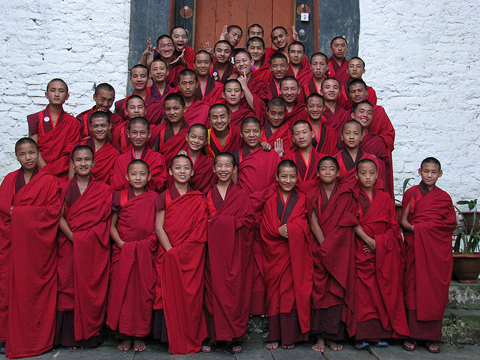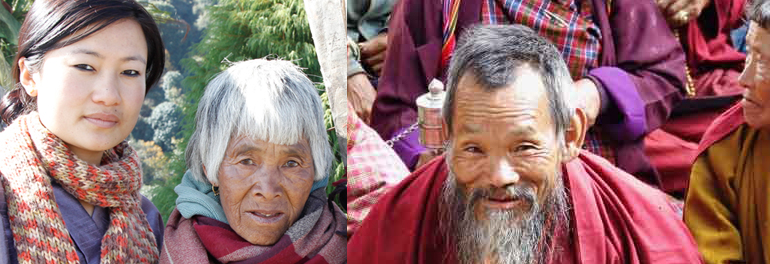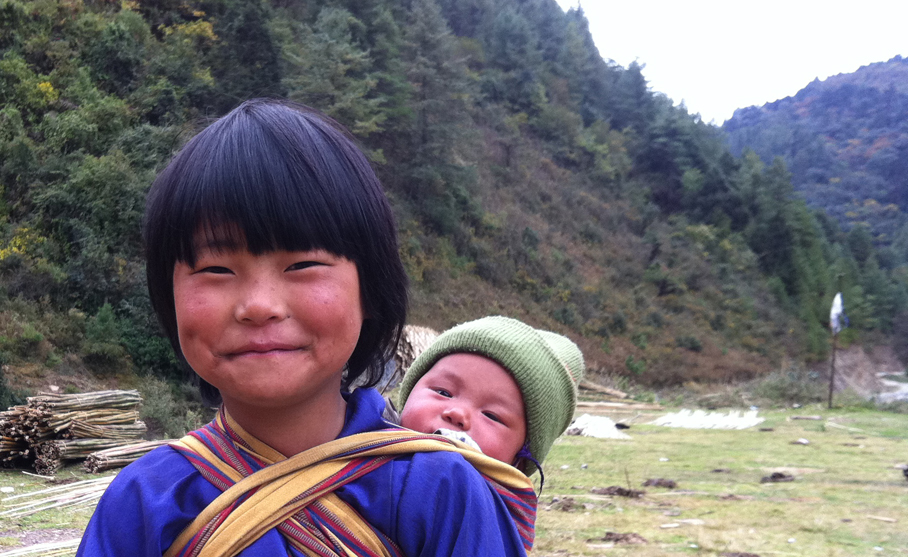
Who are the People of Bhutan?
 People
of Bhutan:
People
of Bhutan:
With rice as the staple diet in the lower regions, and wheat, buckwheat, and maize in the other valleys, the people farm narrow terraces cut into the steep hill slopes. Bhutanese communities settled in the valleys with limited communication in the past. It is for this reason that the sense of individuality and independence emerges as a strong characteristic of the people.
Despite the small population, Bhutan has developed a number of languages and dialects (around 19). These can be roughly grouped into 4:- Dzongkha and sister langauge Che-Cha-Nga-Cha; Bumthangkha and sister languages Au-gay-ma-la, Mangdip and Khengkha; Tshangla (Scharchop); and Lhotsamkha (Nepali).
The Bhutanese are, by nature, physically strong and fiercely independent with an open and ready sense of humour. Hospitality is an in-built social value in Bhutan.
Bhutan is comprised of a mosaic of different people who continue to live in valleys isolated from one another and the outside world by formidable mountain passes. Differing ethnic groups are also distributed according to the varying environments. It is possible to divide Bhutan's population into three broad ethnic groups, though the distinctions blur in places.
Southern Bhutan:
Southern Bhutan is inhabited mainly by Lhotsampa farmers who arrived in the country at the end of the 19th century. They brought the Hindu religion with them as well as the Nepalese language, which is still spoken today over much of Southern Bhutan.

Western Bhutan-
The Western region is the home of the Ngalongs, who are of Mongoloid origin. Most breed cattle or cultivate the land, and their dwellings are spread over a wide area. In the western region the national language of Bhutan, Dzongkha, is spoken mostly.
Central Bhutan-
Eastern Bhutan-
Northern Bhutan-

